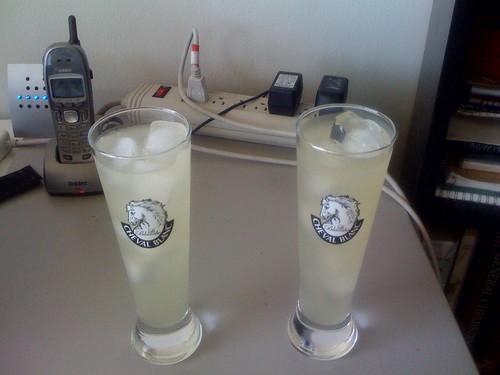Walking Out Of The Tunnel
After 13 years of repeatedly trying, and repeatedly failing, to make a career as an academic, I have walked away. My failures have not, by and large, been failures of ability. My first attempt at a Bachelor's was rocky, but most of that rockiness was the result of two major episodes of depression that interfered with my ability to get shit done.
When I returned to school for round 2 I did much better, graduating with a GPA of 3.94 and getting acceptances to 3.5 out of the 7 graduate schools I applied to. I won't say I was _happy_ during that time, but I was functional. I was managing. Being in a field I actually enjoyed certainly helped a lot.
Round 3 was grad school. I enrolled in a Master's program with the full intention of transferring to a Ph.D. by the end of the year, but after a scant five months I was once again miserable. Full on panic attacks, everything is horrible, I want to drop out right now miserable. I didn't drop out. I stuck it out and brute forced my way through the Master's, not even stopping to glance at the Ph.D. transfer requirements, but then I walked away. I had no plan for what came next, no inkling whatsoever of what I would do instead. I was daily, sometimes hourly, having to convince myself that this wouldn't all end in disaster and regret. I felt like a failure. Like my Master's wasn't an accomplishment I could be proud of, it was a symbol of me quitting.
I know that when I did that I disappointed a lot of people. My professors, colleagues, parents, and even some friends had all wanted and expected me to continue down that road. I was so smart, so insightful, so good at the kind of critical examination that science requires. I was such an asset to seminars and lab meetings, and people were convinced that I would go far. And to be honest, that was what scared me the most.
I never doubted that I _could_ do a Ph.D., if I chose to. If it was what I wanted, I could do really excellent Ph.D. work, move on to do post-docs all over the world, finally (hopefully) get a real, tenure-track job, get tenure, and be a grown up scientist. Forever. And ever. And ever.
Looking down that path felt like looking down a tunnel, with no windows, no exits, and the light at the end so far off it was barely visible. The air in that tunnel was thick with smoke, suffocating me, and the weird orange glow from those weird orange lamps was flickering and hard to see by.
With every glance down that tunnel the urge to flee grew stronger. For several months I wasn't ready to commit to leaving. I took no off-ramps. But at the same time, I stayed out of the express lane. Sticking to the collectors, hogging the right side of the lane.
Finally, at the last moment, I did it. Applied the brakes, jerked the wheel, blasted through some fallen branches on an underused exit and got the hell out of there. I kept driving. Straight off the road and onto the grass.
And then I stopped. Got out of the car. I played in the field for a while. Sometimes I skipped, sometimes I sat and examined the flowers. Sometimes I walked, staring at the sky. Sometimes I curled in a ball and sobbed. I had no direction and it felt like I was going nowhere. I did no visible work for a long time. But slowly, during that time, I explored. Here I found fertile soil, there some sturdy planks. Slowly, so slowly I almost didn't realize it was happening, my exploration of the soil became planting. My examination of the planks led to some building.
I didn't have that handy picture that comes on the side of my seed packets, and I don't have one of those helpful little diagrams that come with your Ikea furniture. To be honest, I have no idea what the garden will contain when it comes into bloom, or what this house will look like when it's built. But the sprouts and seedlings are plentiful and green, and the structure so far is strong and holds me, and is safe. Sometimes when it rains I get wet. Much wetter than I would in that tunnel. But from here I can see the sky and the grass. I can hear the birds and breathe the air. Feel the ground under my feet. I haven't finished building it yet, but I am home.
